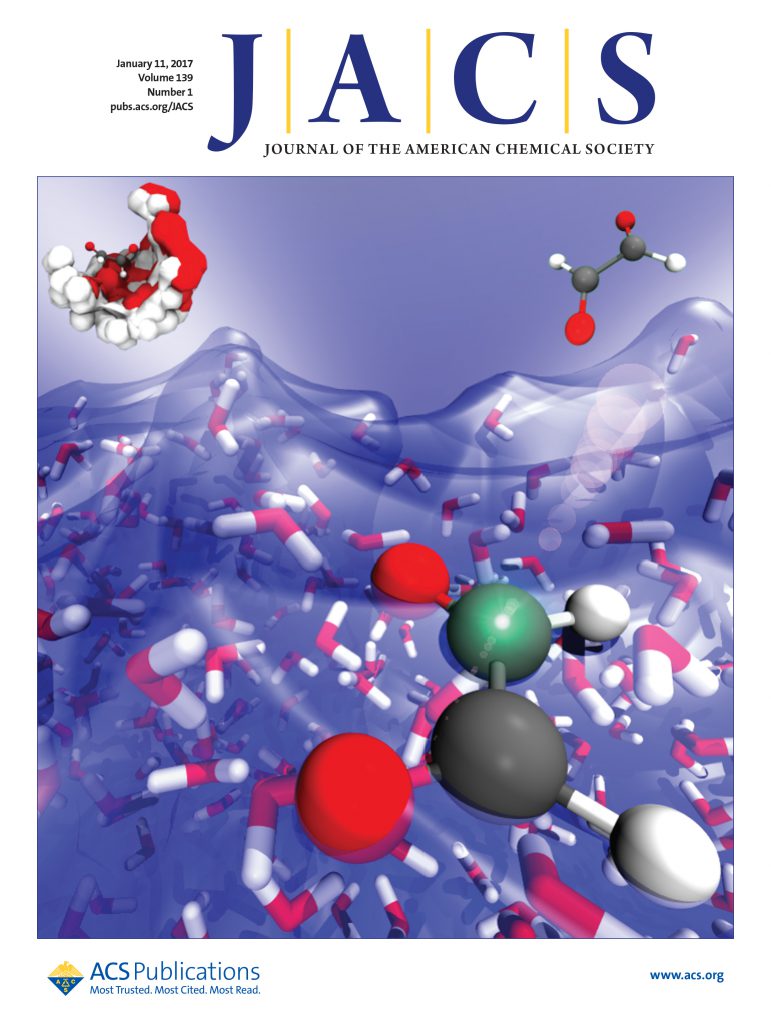IF 14.4
1区 化学
Q1 CHEMISTRY, MULTIDISCIPLINARY
引用次数: 0
摘要
多孔有机聚合物因其可调的孔隙结构和高表面积,已成为能源转换、污染物吸附和异相催化领域的一种前景广阔的材料。然而,大多数多孔有机聚合物仍然受到共轭不足和电子-空穴分离效率低下的限制,阻碍了其光电特性和整体功能的可调性。大环化合物具有电子丰富的空腔和刚性环结构,通过将其作为一种新的构筑模块整合到聚合物网络中,所产生的共轭大环聚合物有望为丰富多孔有机聚合物的光电功能提供一种创新方法。本文通过希夫碱缩合将功能化的柱[5]炔与共轭大环聚合物共价连接,从而构建了一种基于烯丙基铵的柱[5]炔光催化剂 TpAP[5],用于高效的光催化反应。这种材料在光催化产生过氧化氢方面表现出卓越的性能,其速率达到 2343 μmol g-1 h-1。深入研究发现,柱状烯的加入能够协同催化水氧化和氧还原反应,并通过调节分子的共聚作用显著提高催化剂的稳定性。这项工作为设计高性能多功能共轭大环聚合物开辟了新途径,在清洁能源转换方面具有巨大潜力。本文章由计算机程序翻译,如有差异,请以英文原文为准。

Regulating Enol-to-Keto Tautomerization of Pillararene-Based Conjugated Macrocycle Polymers for H2O2 Photosynthesis
Porous organic polymers have emerged as promising materials for energy conversion, pollutant adsorption, and heterogeneous catalysis because of their tunable pore structures and high surface areas. However, most porous organic polymers are still limited by insufficient conjugation and inefficient electron–hole separation, hindering the tunability of their photoelectric properties and overall functionality. By integrating macrocyclic compounds as a new building block, which feature electron-rich cavities and rigid ring structures, into the polymer network, the resulting conjugated macrocycle polymers are expected to provide an innovative approach to enrich the photoelectric functionalities of porous organic polymers. Herein, an enaminone-based pillararene photocatalyst, TpAP[5], is constructed by covalently linking functionalized pillar[5]arene to conjugated macrocycle polymers through Schiff base condensation for efficient photocatalytic reactions. This material demonstrates exceptional performance in the photocatalytic production of hydrogen peroxide, achieving a rate of 2343 μmol g–1 h–1. In-depth investigations reveal that the incorporation of pillararenes enables synergistic catalysis of water oxidation and oxygen reduction reactions and significantly enhances catalyst stability by regulating molecular tautomerization. This work opens new avenues for designing high-performance multifunctional conjugated macrocycle polymers with significant potential for clean energy conversion.
求助全文
通过发布文献求助,成功后即可免费获取论文全文。
去求助
来源期刊
CiteScore
24.40
自引率
6.00%
发文量
2398
审稿时长
1.6 months
期刊介绍:
The flagship journal of the American Chemical Society, known as the Journal of the American Chemical Society (JACS), has been a prestigious publication since its establishment in 1879. It holds a preeminent position in the field of chemistry and related interdisciplinary sciences. JACS is committed to disseminating cutting-edge research papers, covering a wide range of topics, and encompasses approximately 19,000 pages of Articles, Communications, and Perspectives annually. With a weekly publication frequency, JACS plays a vital role in advancing the field of chemistry by providing essential research.

 求助内容:
求助内容: 应助结果提醒方式:
应助结果提醒方式:


